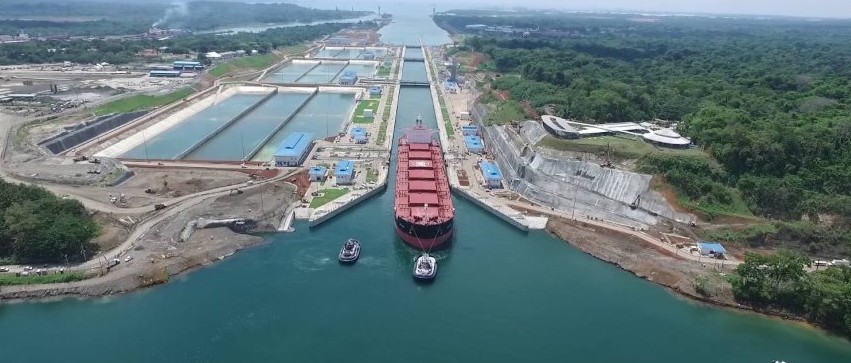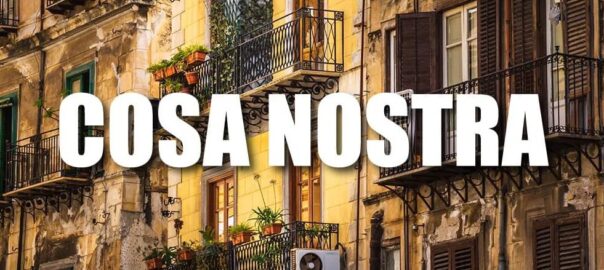The Panama Canal, a marvel of engineering, stands as a vital artery of global trade, connecting the Atlantic and Pacific Oceans and saving ships from the perilous journey around Cape Horn. But the canal’s existence wasn’t a guarantee. It was born from a decades-long struggle, riddled with disease, financial woes, and engineering challenges that tested the limits of human ingenuity and perseverance. The story of its construction is a dramatic saga of ambition, innovation, and ultimately, success.
A Century of Dreaming:
The idea of a canal through the isthmus of Panama predates its actual construction by centuries. As early as the 16th century, Spanish explorers recognized the strategic importance of the narrow land bridge for facilitating trade. However, concrete plans didn’t emerge until the 19th century.
The French Fiasco (1881-1889):
Inspired by the success of the Suez Canal, the French, led by Ferdinand de Lesseps, the same engineer behind the Suez, embarked on the Panama Canal project in 1881. Fueled by optimism and a belief that their experience in Egypt would translate seamlessly, they envisioned a sea-level canal.
The reality, however, was brutally different. The Panamanian jungle presented formidable challenges:
- Tropical Diseases: Yellow fever and malaria ravaged the workforce, claiming tens of thousands of lives. Lack of understanding about mosquito-borne illnesses meant ineffective preventative measures and rampant infection.
- Engineering Issues: The dense jungle, unpredictable rivers, and unstable terrain significantly hampered excavation efforts. Landslides were frequent occurrences, and the initial plans for a sea-level canal proved unrealistic due to the mountainous terrain.
- Financial Mismanagement: Corruption and poor planning drained the project’s finances, leading to dwindling resources and morale.
By 1889, the French project was bankrupt, leaving behind a legacy of death, debt, and a partially excavated ditch. The ambitious dream lay in ruins, a stark reminder of the formidable obstacles presented by the Panamanian landscape.
The American Triumph (1904-1914):
Recognizing the strategic and economic importance of a trans-isthmian canal, the United States, under President Theodore Roosevelt, stepped in. They purchased the French assets and initiated a new approach, learning from the previous failures.
The American effort was marked by:
- Disease Control: A crucial breakthrough was the implementation of mosquito control measures led by Dr. William Gorgas. He systematically eradicated mosquito breeding grounds through draining swamps, spraying insecticides, and implementing screening programs. This significantly reduced the incidence of yellow fever and malaria, making the project viable.
- Engineering Innovations: The Americans abandoned the sea-level canal concept in favor of a lock-based system. This meant constructing a series of dams and locks to raise ships over the continental divide. The Gatun Dam, in particular, was a monumental feat of engineering, creating the artificial Gatun Lake, which became a significant portion of the canal route.
- Improved Management and Technology: Under the leadership of Chief Engineer John Findley Wallace (later replaced by John Stevens and finally George Goethals), the project benefited from better organization, advanced machinery, and a commitment to scientific methods. Massive steam shovels, locomotives, and concrete mixers revolutionized the pace of excavation and construction.
After years of intense labor and overcoming numerous hurdles, the Panama Canal finally opened to shipping on August 15, 1914. The SS Ancon, a cargo and passenger ship, made the inaugural transit, signaling the culmination of a decades-long endeavor.
A Lasting Legacy:
The construction of the Panama Canal was a monumental achievement, not just for its engineering prowess but also for its impact on global trade and geopolitics. It shortened shipping routes, reduced costs, and spurred economic growth. The canal also solidified the United States’ position as a global superpower.
However, the human cost of construction was significant. Thousands of workers, primarily from the Caribbean, lost their lives to disease, accidents, and harsh working conditions. The story of the Panama Canal serves as a testament to both the extraordinary capabilities and the potential pitfalls of human ambition. It reminds us that even the most magnificent achievements are often built upon a foundation of sacrifice and resilience.
Today, the Panama Canal continues to play a vital role in global commerce, a testament to the vision and determination of those who dared to dream of connecting two oceans. The recent expansion of the canal allows larger ships to transit, ensuring its continued relevance in the 21st century and beyond. The legacy of its construction resonates, inspiring future generations of engineers and reminding us that even the most daunting challenges can be overcome with innovation, perseverance, and a commitment to learning from the past.

The Panama Canal: A Lifeline Still Navigating Political Waters
The Canal’s history is deeply intertwined with political struggles. Built by the United States in the early 20th century after a controversial separation of Panama from Colombia, it served as a critical asset for American naval power and economic dominance in the region. For decades, the Canal Zone, an area administered by the US, was a constant source of tension and nationalistic resentment within Panama.
The signing of the Torrijos-Carter Treaties in 1977 marked a turning point, paving the way for the gradual transfer of control of the Canal to Panama. The final handover on December 31, 1999, was a watershed moment for the nation, signifying the culmination of generations of struggle for sovereignty and the realization of Panama’s complete independence.
Since assuming control, Panama has successfully managed and expanded the Canal, demonstrating its capability and commitment to maintaining its operational efficiency and relevance in the global economy. The Panama Canal Authority (ACP), an autonomous government agency, is responsible for the Canal’s administration, operation, and maintenance. It operates with a high degree of autonomy, shielded from direct political interference, a crucial element in ensuring its efficient and profitable operation.
However, the Canal is not entirely immune to political currents. Several key factors continue to shape its political context:
- Economic Dependence: The Canal contributes significantly to Panama’s GDP, making the country highly reliant on its continued success. This economic dependence creates a sensitivity to global economic fluctuations and the potential impact of alternative shipping routes or technologies.
- Geopolitical Competition: While the US remains a key trading partner and user of the Canal, the rise of China as a global economic power has significantly altered the landscape. China is now a major user of the Canal, and its growing influence in the region has raised concerns about potential competition and strategic implications. Panama must carefully navigate this delicate balance to maintain its neutrality and ensure the Canal benefits all users equally.
- Environmental Concerns: The Canal’s operation and planned expansions raise environmental concerns, including water management, deforestation, and the impact on biodiversity. Balancing economic growth with environmental sustainability is a critical political challenge for the Panamanian government.
- Domestic Politics: Internal political dynamics within Panama, including concerns about corruption and transparency, can indirectly impact the Canal’s reputation and operational efficiency. Ensuring good governance and accountability is crucial for maintaining investor confidence and securing the Canal’s long-term success.
- Regional Relations: The Canal plays a vital role in regional trade and connectivity. Panama’s relationships with neighboring countries, particularly those reliant on the Canal for their exports and imports, are crucial for maintaining stability and cooperation.
Looking ahead, the Panama Canal faces both opportunities and challenges. Expanding infrastructure, adopting new technologies, and adapting to changing trade patterns are essential for maintaining its competitiveness. Moreover, navigating the complex interplay of global and domestic political forces will be crucial for ensuring the Canal’s continued success as a vital artery for global trade and a symbol of Panamanian sovereignty. The future of the Panama Canal hinges on Panama’s ability to balance its economic ambitions with its commitment to neutrality, sustainability, and good governance, all while navigating the ever-shifting currents of the global political landscape.









